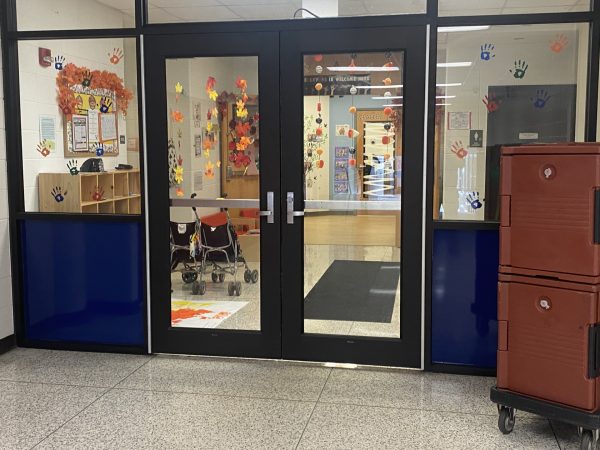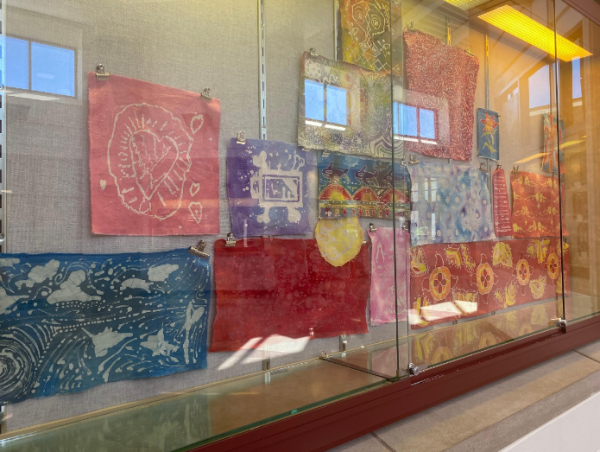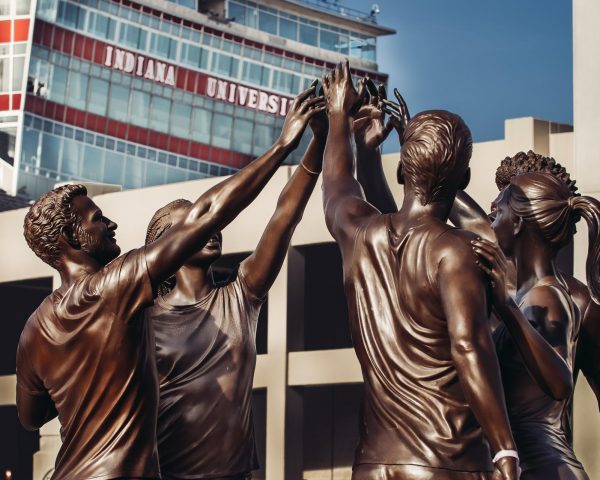The Non-Binary Community At North
In recent years, progress has been made concerning the rights of the LGBTQ+ community.
Throughout America, rights of marriage, adoption, and a growing acknowledgement and acceptance in many places have become more commonplace, and people belonging to the community have been coming out.
We’ve seen this at North, too. Not only have LGBTQ+ students been made to feel welcome, but several adjustments have been made for trans and non-binary students, such as gender neutral bathrooms.
All students (regardless of gender identity) are welcome to use them if they feel uncomfortable using gender specific bathrooms.
At North, several students have come out as non-binary at North, including sophomore Emily Burns, whose name has been changed due to confidentiality reasons.
Burns has realized that though she wants her physical appearance to be female, she does not consider herself a fixed gender in her mind. Her friends have all accepted her transition, though she’s still having trouble getting her family to understand.
“The first person I told was my mom, and I feel like she acted like she understood, but I could tell that she kind of didn’t … she’s known I’ve been identifying as female until recently, and she’s kind of talked about it every once and awhile, [and] it seems she didn’t understand why I was Transgender at the time… and I ended up telling her, ‘Mom, I’m just agender.’” said Burns.
Non-binary is mainly defined as an umbrella term referring to individuals whose gender identity doesn’t fit within the typical male-female binary. Often times, these individuals will cease to use gender-specific pronouns for themselves and opt for the pronouns “they” and “them.”
More terms concerning different types of sexual orientation and gender identification have been created, including the term non-binary, or gender nonconforming.
With the growing acceptance of the concept of a relationship between two people of the same gender, other groups have become bolder in showing the community they are there, too.
As clubs for LGBTQ+ students and Straight Allies are opening up, including one such club at North, some people’s views have begun adapt. However, even at North, some students have experienced hostility because of their orientation or identity, the most prominent incident being the previous conflict with the Pride Flag and the Confederate Flag.
The development of different schools’ perspectives on the LGBTQ+ and non-binary community has been mirroring the development across America. While rights have beens teadily granted to the community, the struggle to be recognized by the government has only just recently made any headway. As of June 10, 2016, Jamie Shupe legally changed their gender identity to non-binary instead of male or female. The only other case of this happening took place a few months later, on the twenty-sixth of September, when Sara Kelly Keenan was also recognized as non-binary. These are the only two cases of the kind in American history.
Though these two cases are, at face value, success stories, accounts of violence and harassment are commonplace, and schools are often a hostile environment for gender nonconforming youth. 19 percent of working-age gender nonconforming individuals are unemployed on the basis of their identity. No laws specifically target gender nonconforming individuals (besides the North Carolina bathroom laws) except for Title VII.
Title VII is a law that protects employees from being fired due to a prejudice against gender, race, religion, etc., but it overlooks one detail. A “Protected Trait” such as being trans or non-binary is a firing offense if a business decides it interferes with work or goes against company policy.
Though some are more progressive with their thinking, the idea of being non-binary is not acceptable to others, and not just Bible-thumping extremists.
The website Feminist Current claims “… [the] non-binary identity is essentially devoid of meaning,” and “A woman coming out as ‘non-binary’ is a non-statement that declares nothing but common loathing of the female class.”
This has parallels with second-wave feminism, where trans women were often excluded because they were perceived to not truly understand what it meant to be a women or simply wished to invade female spaces and co-opt femininity.
Today, feminists that still have those beliefs (and have extended them to encompass the non-binary community) are called T.E.R.F.S., or Trans Exclusive Radical Feminists. The term non-binary is still relatively new for some, and time may have to pass before public consciousness accepts it.
“I want people to be able to be comfortable anywhere in their own gender… if somebody’s at school, and they’re gender neutral, or gender fluid, they should be able to express that freely.” said Burns. “… [but] there’s still a lot of hate… and it’s sad, but hopefully that changes, I want it to change… I wish people were more accepting of it, and I want it to be that way. That’s what I want for the future.”






